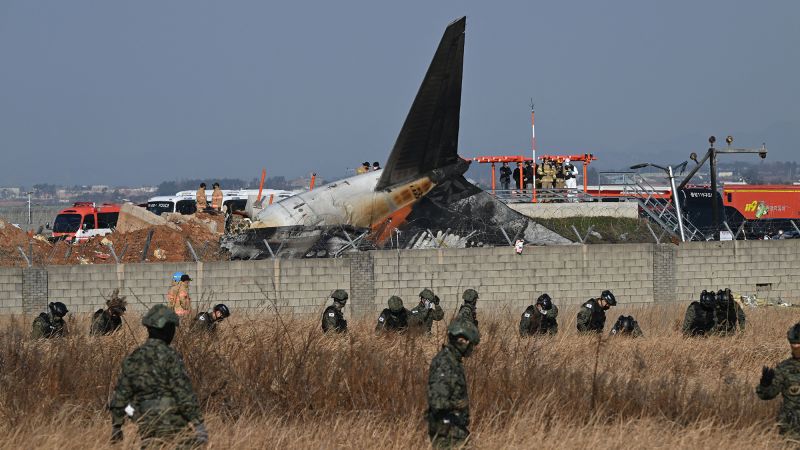[Moments before the crash of Jeju Air flight 2216, a passenger aboard texted a friend that the Boeing 737-800 aircraft had struck a bird.
“Wait a minute… we can’t land because a bird (or birds) caught in our wing,” the passenger said at 9 am local time, on a Korean messaging platform, KakaoTalk, according to messages widely shared in South Korean media, including CNN affiliate JTBC.
The possible bird strike, lack of landing gear deployment, and concrete barrier could have contributed to the aviation accident, which has been labeled as the deadliest in South Korea since 1997. However, the cause of the crash has yet to be determined, and it could be months before investigators know why the plane crashed.
US officials, including the National Transportation Safety Board, plane maker Boeing, and the Federal Aviation Administration, are working with South Korea’s Aviation and Railway Accident Investigation Board to provide more information about the incident.
Despite the crash, the Boeing 737-800 has a very strong safety record, unlike its successor 737 Max model, which has had numerous problems. South Korea’s safety record has been exceptional, with all South Korean airlines having safety management systems in place and doing well in International Civil Aviation Organization audits.
The pilot reported an emergency declaration and go-around due to a bird strike, and the control tower had warned the pilot of birds in the area before the reported strike. Globally, wildlife strikes with civilian and military aircraft have killed more than 491 people and destroyed over 350 aircraft from 1988 to 2023.
Experts said that a bird strike could have caused an engine to fail, which may have knocked out the plane’s hydraulics. However, even if this was the case, it doesn’t explain why the landing gear didn’t deploy. The two surviving flight attendants may not have felt the force of the wall, but it’s unclear why the plane’s wheels didn’t fully deploy before landing.
The crash killed 179 of 181 people aboard, aside from two crew members who were pulled alive from the site. The last deadly crash in South Korea occurred in 1997 when a Korean Air Lines Boeing 747 crashed in the Guam jungle, killing 228 people. Many airports don’t have similar structures so close to runways, according to aviation experts.
The FAA defines the surface surrounding runways as “runway safety areas,” which are typically 500 feet wide and extend 1,000 feet beyond each runway end. Shahidi said investigators will take a further look at the barrier to determine whether it was in compliance with international standards for runway construction.
US officials will wait for South Korean officials to release more information, and at least one US airline is working with investigators to learn more: Southwest Airlines. Experts said it is premature to place the blame on Boeing until more information has been made public, but critics of Boeing may have already begun pointing fingers at the plane maker and its year of faulty mistakes.
The National Transportation Safety Board will examine the pilot, the environment, and the aircraft in its investigation, and will consider factors such as the bird strike, the lack of landing gear deployment, and the concrete barrier.
Source link

